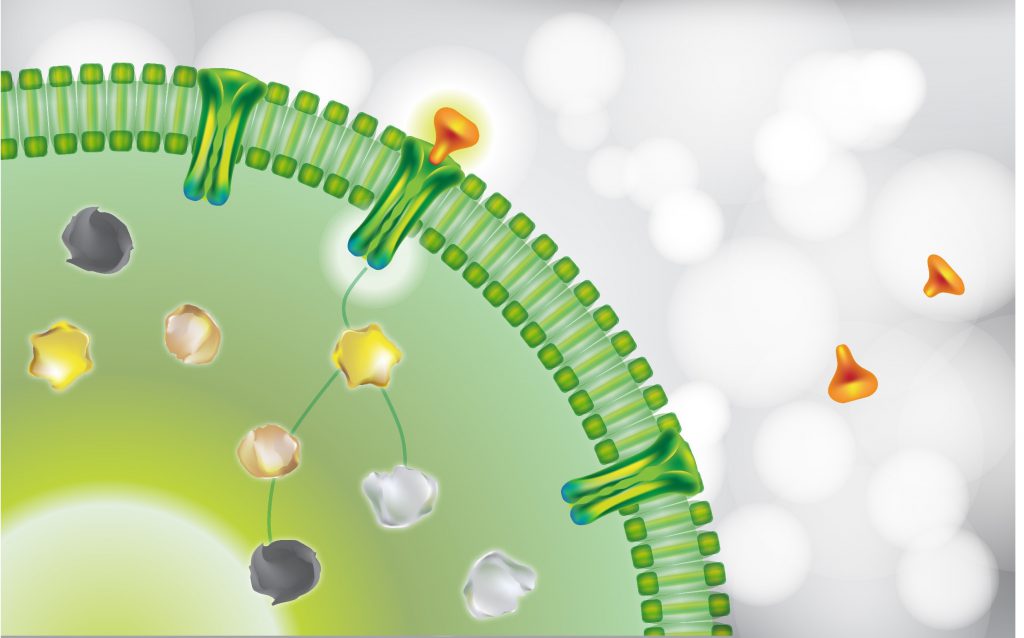
The biological barriers formed by our bodies are constantly evolving, protecting us from infections and parasites. But they also filtered out many promising nanoparticle drugs. Finding out why is at the core of developing the next generation of drugs. For all advanced or targeted therapies, crossing some biological barriers is fundamental. Different types of disorders show different degrees of difficulty. For example, the most challenging is the blood-brain barrier, which has been a barrier to really treating the brain effectively. Other disorders, such as the intestines and lungs, are equally difficult but less challenging. Many studies in academia and industry have used trial and error to determine why some nanoparticles fail the test.
The EU-backed PathChooser (innovative, mechanistic-based strategy for delivering therapeutic macromolecules across cellular and biological barriers) takes a different approach. Professor Kenneth Dawson, director of the Centre for BioNano Interactions at University College Dublin and the project coordinator, explained that their purpose was to try to understand the processes that prevent barrier transport and the mechanisms that allow such transport to occur. He also explained that intracellular, extracellular, and other cellular processes make barrier crossing possible, or in some cases prevent it. Over the years, it has been known that small numbers of particles can cross barriers in the body, such as the blood-brain barrier and other barriers. Their goal is to make nanoparticles better designed as drug carriers, increasing their likelihood of safely crossing barriers.
Remove trial and error in the process-reverse engineering
To further design better drug carriers, the project wanted to determine what these cellular processes are and how they interact with nanoparticles to facilitate or prevent the crossing of these obstacles. To deal with this problem from different angles, they synthesized a large number of nanoparticles, which are easily tracked when they cross the barrier. The team then tried to re-grow the cells that made up the barrier and examine which nanoparticles could cross a given barrier.
Professor Dawson said they have removed many established obstacles from the research community and developed some of their own. Using these models, they studied the mechanism of how particles traverse, and what prevented some of them from entering the model. The team then found that fewer and fewer candidate nanoparticles were able to cross the barrier. PathChooser has studied these in more detail to understand the key aspects of nanoparticles, which are involved in the process they use to cross the barrier.
A clearer understanding of the mechanism behind barrier penetration
The project confirmed that molecules on the surface of nanoparticles can prevent and inhibit their transit. Researchers can see these particles being endocytosed, absorbed, and then transported out for degradation because they are considered ‘foreign’. This made it clearer to researchers that the surface of the nanoparticles needs to be designed very carefully.
The “PathChooser” project provides valuable insights into how the surface structure of biomolecules affects the barrier crossing mechanism. Professor Dawson said they were able to map out common surface properties that cause obstacles to fail to traverse. At the beginning of the project, researchers didn’t know why some nanoparticles couldn’t cross the barrier. Thanks to the work of the team, they now have a relatively simple method to sift out a large number of candidate particles, and they know that these nanoparticles cannot work because of their surface design standards. The professor said that they are no longer as discouraged as people in this field, because they are now beginning to feel that there is a more systematic way to solve this problem.
Helping develop more effective drugs
In the long run, PathChooser should have an impact on the development of more effective and easier to use drugs that can treat diabetes and some of the most difficult diseases, such as glioblastoma. Glioblastoma is considered incurable because it cannot reach the brain. Researchers hope to have a better understanding of the connection between nanoparticle design and its results, which will greatly reduce the efficiency of the drug design cycle. If the efficiency of nanomolecular drug design can be improved, the impact on research and development costs will open the door to the development of a new set of drugs. Professor Dawson said that the key overall result of the project is that they have a deeper understanding of what is hindering this traversal process and what are the key pathways to this traversal process.
